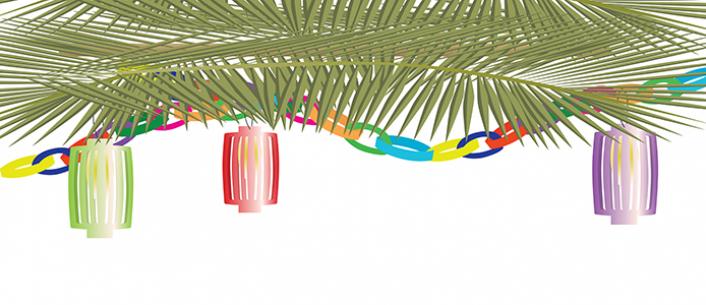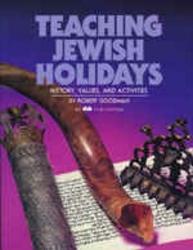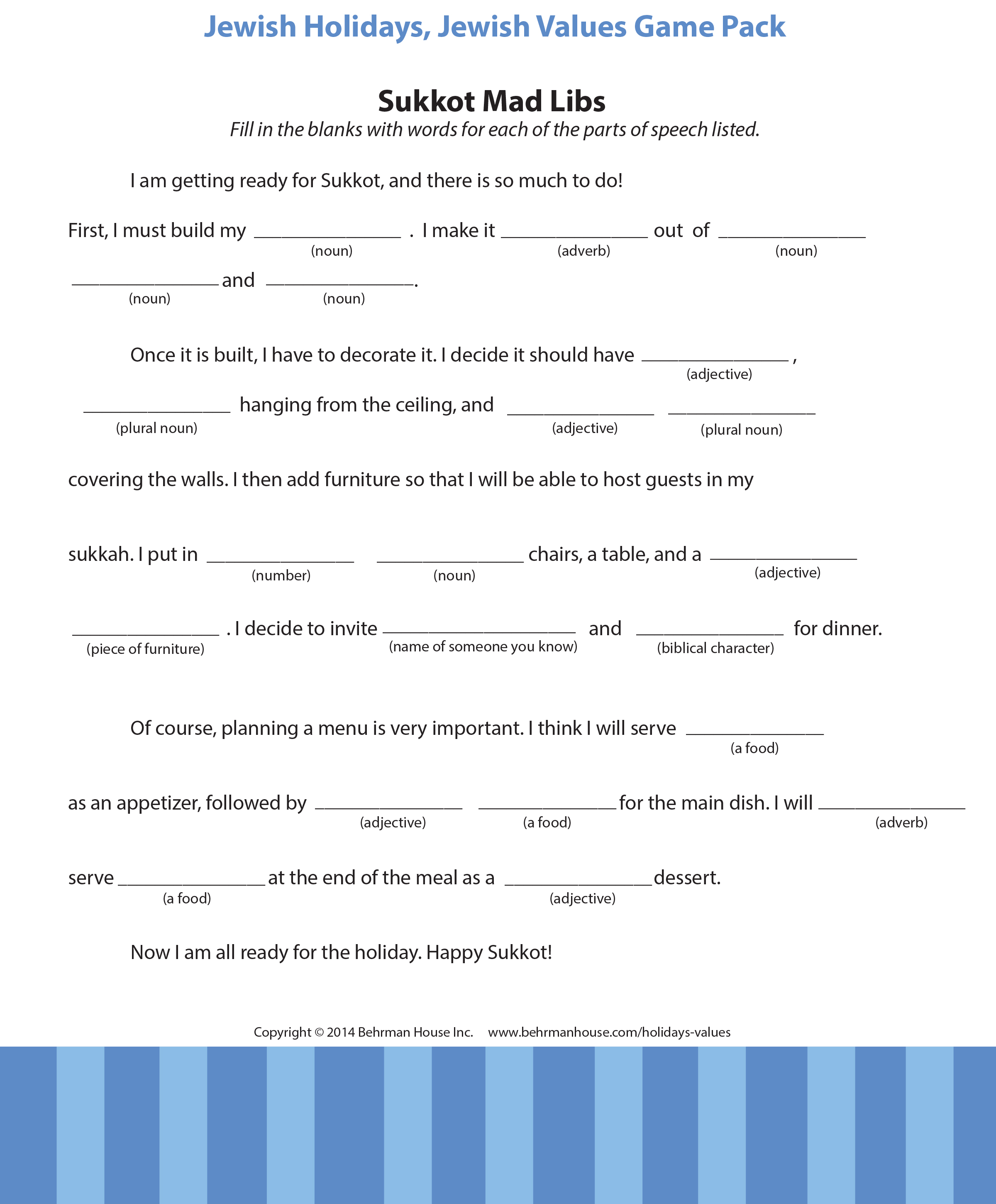- Home
- Play & Learn Home
- Online Enrichment
- Experience Modern Israel
- Israel It's Complicated
- Jewish and Me
- Jewish Holidays Jewish Values
- Jewish Values in Genesis and Jewish Values in Exodus
- Min Ha’aretz
- Our Place in the Universe
- Simply Seder
- The Prophets: Speaking Out for Justice
- Making T'filah Meaningful
- Make, Create, Celebrate
- Yom Haatzmaut Resources
- Hebrew Apps
- About The OLC
- What is the OLC?
- Introduction
- Get Started
- Resources
- OLC Content
- Parent Materials
- See My OLC Classes
- Store
Teaching the Jewish Thanksgiving
Written by Behrman House Staff, 11 of September, 2017
Sukkot - also known as Festival of Thanksgiving - inspired the Pilgrims. How are you teaching Sukkot this year?
We've tapped into our materials and rounded up a few ideas for you to enhance student learning this new year.
Compare Sukkot to Thanksgiving
Are you using Jewish Holidays, Jewish Values this year? The student journal gives students a way to compare the two holidays that celebrate the harvest and give thanks for our blessings. The Lesson Plan Manual provides the background and context for this exercise, discussion questions, such as:
Why do you think the Torah tells the ancient Israelies to "rejoice before Adonai your God," rather than just celebrating on their own?
When you celebrate your own successes and milestones, how (if at all) is your celebration a way of saying thank you to God or to the people who helped make it possible? Think about how you celebrate getting an award at school or at an extracurricular activity, or how your famliy and community celebrates milestones like births, bar and bat mitzvahs, or weddings.
The Lesson Plan Manual features essential questions, active lesson plans, enrichment options, project based learning ideas, suggestions for families, and links to a variety of supplemental materials for all the Jewish holidays. The free Jewish Holidays, Jewish Values Game Pack is another way to add some fun to student learning, with holiday crosswords, word finds, word scrambles, and Mad Libs, like this one for Sukkot.
Download a PDF version of the Sukkot MadLibs.
Plan a "Thank-You" Party
Hakarat Hatov is Hebrew for "recognizing the good." It means "gratitude," or being thankful for the good thing in our lives. In The Jewish Educator's Companion, author Batsheva Frankel discusses how Jewish values are meant to be lived. "Students might better understand the merit of living a Jewish life by actually experiencing the meaning and importance of our Jewish values," she writes. Sukkot, with its emphasis on gratitude, offers students an opportunity to explore this value. Here's an example:
Have students decide on a person, organization, or other establishment to whom they would like to express hakarat hatov, especially one that isn't expecting it. Have them plan a special "Thank-You" party.
 Preserve the Etrog
Preserve the Etrog
Teaching Jewish Holidays is a comprehensive reference that offers a wealth of creative strategies, plus complete historical overview, vocabulary, and more, for each Jewish holiday. Here's are some Sukkot activity ideas for primary grade students:
* Help students build a miniature sukkah: This can be elaborate or done simply. A nice approach is to ask each child to bring in a shoe box. Strips can be cut out in the top and on the sides. Use colored paper or strings of beads to decorate the root. Put cut-out objects or designs drawn with crayons or markers around the sukkah.
* Draw and cut out shapes of fruits, vegetables and branches and place them on the windows and walls, creating the effect of the whole classroom as a sukkah.
* Preserve the school etrog by punching hundreds of holes in it with a nail and fitting the holes with whole cloves. The etrog, which will turn brownish, preserved in an attractive covered glass jar, can be used weekly at the synagogue's havdalah service as besamim or loaned weekly to different students for the same purpose. It is said that such etrogim may last for more than 100 years!
Chag Sameach!


